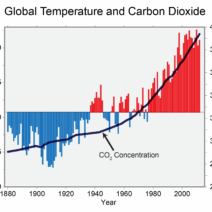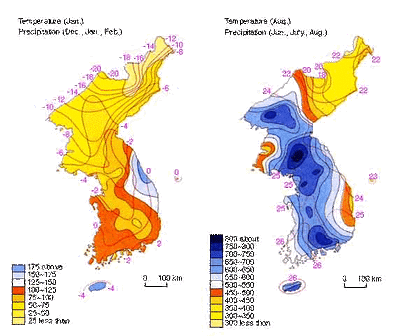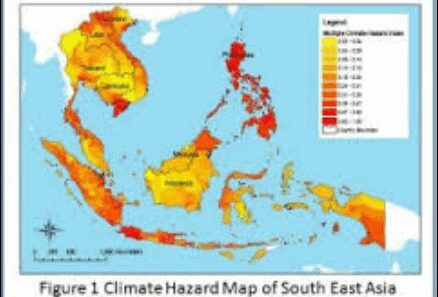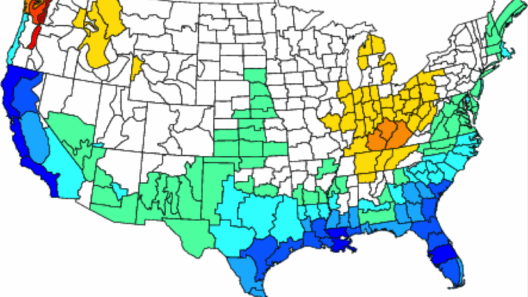South Korea, a dynamic nation perched on the Korean Peninsula, experiences a climate characterized by four distinct seasons: spring, summer, autumn, and winter. Each season brings its own unique weather patterns, natural beauty, and cultural significance, making the climate an integral element of South Korean life. This discourse delves into the quintessence of South Korea’s climate, elucidating how each season intertwines with the country’s cultural fabric.
Spring: The Resplendent Awakening
Spring in South Korea unfolds from March to May, heralding a vibrant rejuvenation of nature. The temperatures gradually ascend from the chilly remnants of winter, averaging between 10°C to 20°C (50°F to 68°F). As the landscape transforms, cherry blossoms (or “beotkkot”) bloom magnificently, signaling the onset of the celebrated cherry blossom festivals. This season is not merely a meteorological shift but a cultural revival. Festivals such as the Jinhae Cherry Blossom Festival attract throngs of visitors, celebrating the ephemeral beauty of the blossoms and symbolizing hope and renewal.
During spring, citizens engage in various outdoor activities. Hiking in the picturesque mountains, participating in traditional dances, and savoring seasonal cuisines become prevalent as people bask in the mild weather. The celebration of Sihwa, a springtime rite, further deepens the connection between culture and nature.
Summer: A Torrid Delight
Spanning from June to August, summer in South Korea is notably hot and humid, marked by temperatures soaring to 30°C (86°F) and beyond. The monsoon season, typically arriving in July, unleashes torrential downpours, contributing significantly to the region’s annual rainfall. This sweltering period engenders a diverse array of cultural festivities that reflect both the challenges and pleasures of the season.
Summer festivals such as the Boryeong Mud Festival encapsulate the essence of this season. Locals and tourists converge to revel in the therapeutic qualities of mud while participating in games and contests, showcasing the South Koreans’ affinity for fun amidst the heat. Additionally, the culinary tradition during these months leans heavily towards refreshing dishes such as “naengmyeon,” a cold buckwheat noodle soup, providing respite from the sweltering heat. Summer also brings the ritual of harvesting rice—an event celebrated with communal gatherings and traditional music that reverberates through the fields, emphasizing agriculture’s cultural significance.
Autumn: The Bountiful Harvest
As the oppressive heat wanes, autumn introduces a magnificent display of colors from September to November. The landscape is adorned with hues of red, orange, and gold, as deciduous trees shed their leaves in a dramatic fashion. Temperatures range from 10°C to 20°C (50°F to 68°F), providing an invigorating climate ideal for outdoor ventures.
The Korean Chuseok festival coincides with the harvest season, a time steeped in tradition. Families gather to pay homage to their ancestors, preparing special dishes such as “songpyeon,” a traditional rice cake, symbolizing gratitude for the bountiful harvest. The vibrant cultural practices during this period are underscored by communal feasts and folk games. The visual splendor of autumn foliage draws many to the national parks, where the striking landscapes offer serene backdrops for contemplation and photography.
Winter: The Icy Embrace
From December to February, winter envelops South Korea in a frosty blanket, where temperatures can plunge to -10°C (14°F) or lower in some regions. Snowfall is common, especially in the mountainous areas, creating picturesque winter landscapes. The cold weather does not deter the South Koreans from maintaining an active and vibrant lifestyle; rather, it gives rise to a host of winter sports and festivals.
This season seamlessly weaves itself into the cultural heritage of South Korea through the celebration of Seollal, the Lunar New Year. Families partake in ancestral rites and indulge in festive meals featuring “tteokguk,” a rice cake soup believed to confer good fortune for the coming year. Additionally, winter sports enthusiasts flock to ski resorts, transforming the snowy landscapes into playgrounds for skiing and snowboarding. The blending of recreation and tradition highlights the resilience and adaptability of Korean culture, even in the face of harsh winter conditions.
Climate Change Implications
The diverse climate in South Korea offers substantial benefits; however, it is not immune to the pernicious impacts of climate change. Escalating temperatures, erratic weather patterns, and increased frequency of natural disasters are beginning to manifest, posing threats to agriculture, biodiversity, and overall societal well-being. Encroaching climate anomalies compel communities to re-evaluate traditional practices and adapt to shifting environmental conditions. Awareness and proactive measures are paramount to ensure the preservation of South Korea’s natural beauty and cultural heritage in the face of climatic challenges.
In conclusion, South Korea’s climate epitomizes a rich interplay between nature and culture. From the blossoming cherry trees of spring to the snowy peaks of winter, each season offers a unique tapestry of experiences that enrich the lives of its inhabitants. It is imperative to foster a greater understanding of this climate and the vital role it plays in shaping South Korean identity while advocating for sustainable practices in the face of climate change. The enchanting beauty and cultural significance of South Korea’s seasons remind us of the inherent connection between environment and society.








